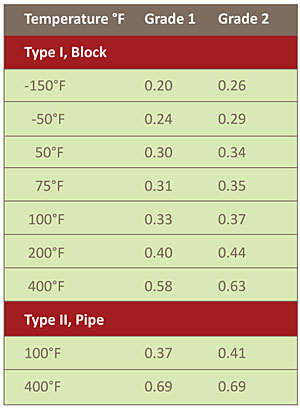Exploring Insulation Materials
Cellular Glass
Cellular glass insulation is a rigid, inorganic,
non-combustible, impermeable, chemically resistant form of glass. It is
available faced or un-faced (jacketed or un-jacketed). Cellular glass is
defined by ASTM as insulation composed of glass processed to form a rigid foam
having a predominantly closed-cell structure. Cellular glass is covered by ASTM
C552, “Standard Specification for Cellular Glass Thermal Insulation,” and is
intended for use on surfaces operating at temperatures between -450 and 800°F.
The Standard defines two grades and four types, as follows:

Cellular glass is produced in block form (Type I).
Blocks of Type I product are typically shipped to fabricators who produce
fabricated shapes (Types II, III, and IV) that are supplied to distributors
and/or insulation contractors.
The maximum thermal conductivity is specified, by
grade, as follows (for selected temperatures).

The standard also contains
requirements for density, compressive strength, flexural strength, water
absorption, water-vapor permeability, combustibility, and surface burning
characteristics.
Because of the wide temperature range, different
fabrication techniques are sometimes used at various operating temperature
ranges. Typically, fabrication of cellular glass insulation involves gluing
multiple blocks together to form a “billet,” which is then used to produce pipe
insulation or special shapes. The glue or adhesives used vary with the intended
end use and design operating temperatures. For below-ambient applications, hot
melt adhesives such as ASTM D312 Type III asphalt are usually used. On above-ambient
systems, or where organic adhesives could pose a problem (i.e., LOX service),
an inorganic product such as gypsum cement is often used as fabricating
adhesive. Other adhesives may be recommended for specific applications. When
specifying cellular glass insulation, include system operating conditions to
ensure proper fabrication.
